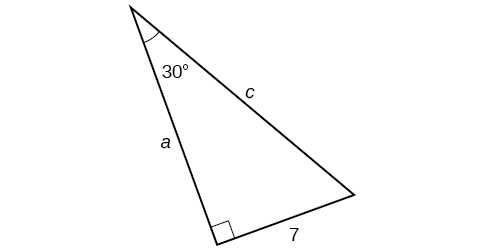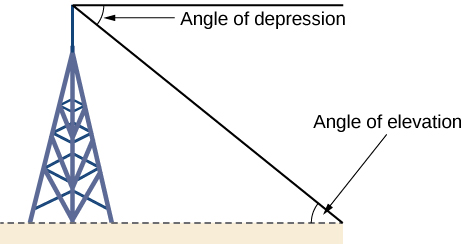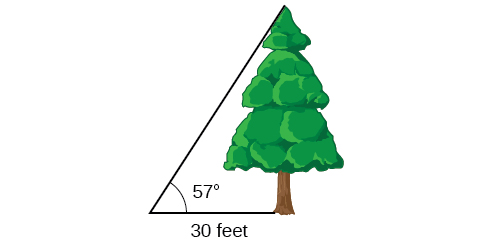| << Chapter < Page | Chapter >> Page > |
Find the unknown sides of the triangle in [link] .

We know the angle and the opposite side, so we can use the tangent to find the adjacent side.
We rearrange to solve for
We can use the sine to find the hypotenuse.
Again, we rearrange to solve for
A right triangle has one angle of and a hypotenuse of 20. Find the unknown sides and angle of the triangle.
missing angle is
Right-triangle trigonometry has many practical applications. For example, the ability to compute the lengths of sides of a triangle makes it possible to find the height of a tall object without climbing to the top or having to extend a tape measure along its height. We do so by measuring a distance from the base of the object to a point on the ground some distance away, where we can look up to the top of the tall object at an angle. The angle of elevation of an object above an observer relative to the observer is the angle between the horizontal and the line from the object to the observer's eye. The right triangle this position creates has sides that represent the unknown height, the measured distance from the base, and the angled line of sight from the ground to the top of the object. Knowing the measured distance to the base of the object and the angle of the line of sight, we can use trigonometric functions to calculate the unknown height.
Similarly, we can form a triangle from the top of a tall object by looking downward. The angle of depression of an object below an observer relative to the observer is the angle between the horizontal and the line from the object to the observer's eye. See [link] .

Given a tall object, measure its height indirectly.
To find the height of a tree, a person walks to a point 30 feet from the base of the tree. She measures an angle of between a line of sight to the top of the tree and the ground, as shown in [link] . Find the height of the tree.

We know that the angle of elevation is and the adjacent side is 30 ft long. The opposite side is the unknown height.
The trigonometric function relating the side opposite to an angle and the side adjacent to the angle is the tangent. So we will state our information in terms of the tangent of letting be the unknown height.
The tree is approximately 46 feet tall.

Notification Switch
Would you like to follow the 'Algebra and trigonometry' conversation and receive update notifications?